Vegetation of Alonnisos
Vegetation of Alonnisos
Alonissos is one of the greenest Greek islands: with the exception of the precipices and the mountain ridges, where vegetation cannot establish itself due to the hostile soil and climatic conditions, the areas that appear bare today, as a result of agricultural or livestock activity, are realy restricted.
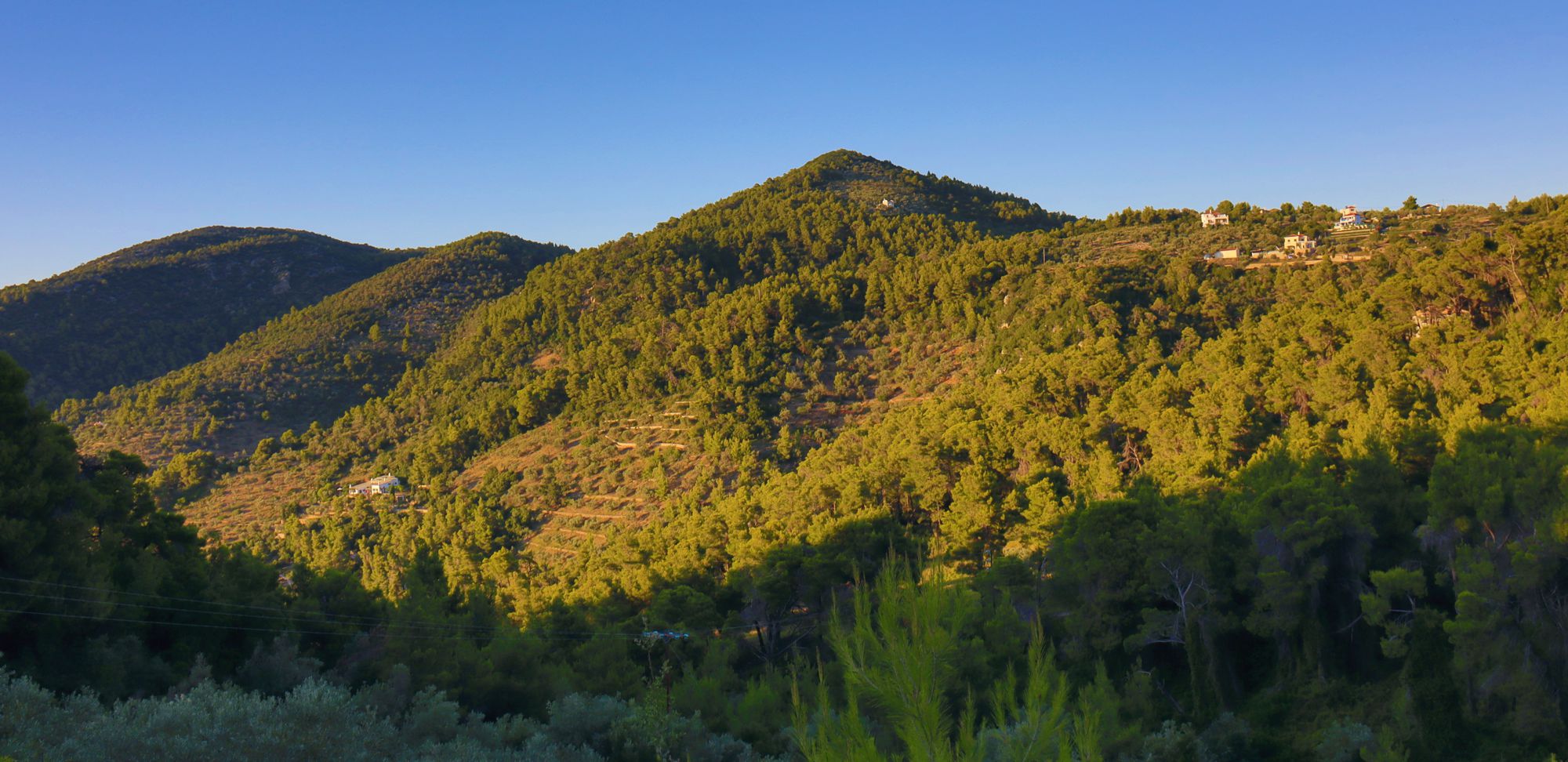
The mountains of Alonnisos are covered by Aleppo pine forest
Click to enlarge
The mountains of Alonnisos are covered by Aleppo pine forest
The vegetation cover of Alonissos is composed mainly of Aleppo pine forests, of a relatively tall and dense Mediterranean maquis with Kermes oak (Quercus coccifera), Evergreen oak (Quercus ilex), Strawberry tree (Arbutus unedo) and Phoenicean juniper (Juniperus phoenicea) and from smaller areas with frygana.
All the somewhat fertile basins are covered with olive groves, while the mountain plateaus retain traces of old arable crops.
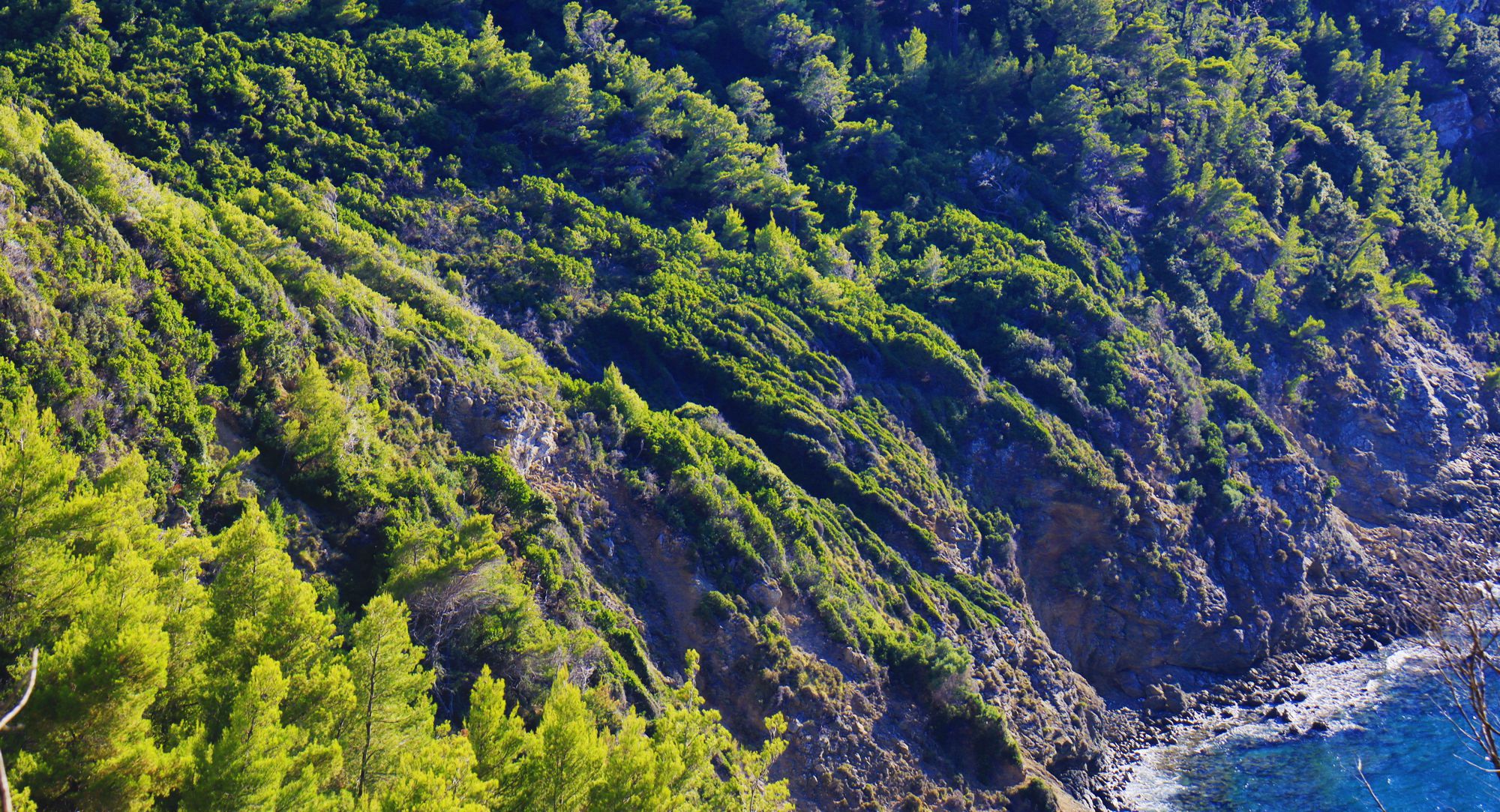
Although today there are only scattered trees, it is believed that in the past there were oak forests in Alonissos - as in other islands - which were gradually replaced by pine forests. Pines were favored by man due to the use of their wood in the construction of boats.
Phrygana
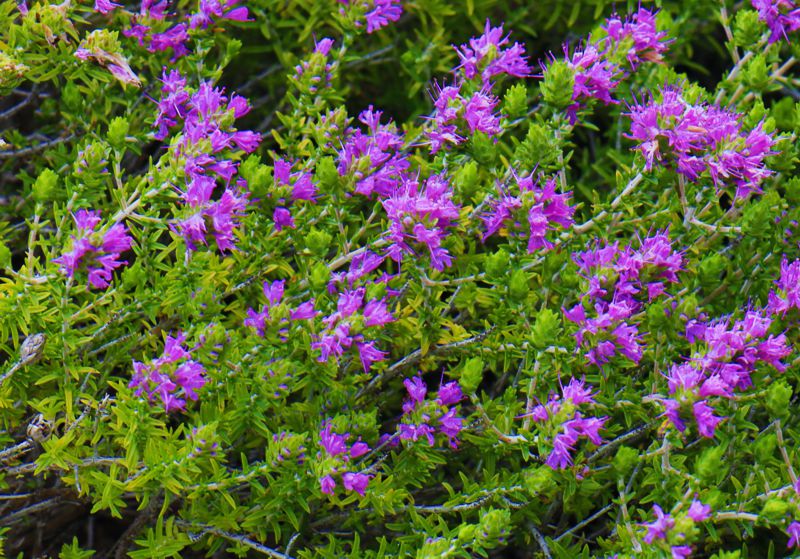
Phrygana cover the areas between the forest, the scrubland and the coasts. Their zones are interrupted by rocks and crops, yet internally they exhibit remarkable homogeneity in structure and species.
The mort obvious species in the Alonissos phrygana zone is the Thyme (Coridothymus capitatus). The typical composition of the zone includes Sarcopoterium spinosum, Anthyllis hermanniae, Calicotome villosa, Euphorbia dendroides and Euphorbia acanthothamnos.
Mediterranean maquis
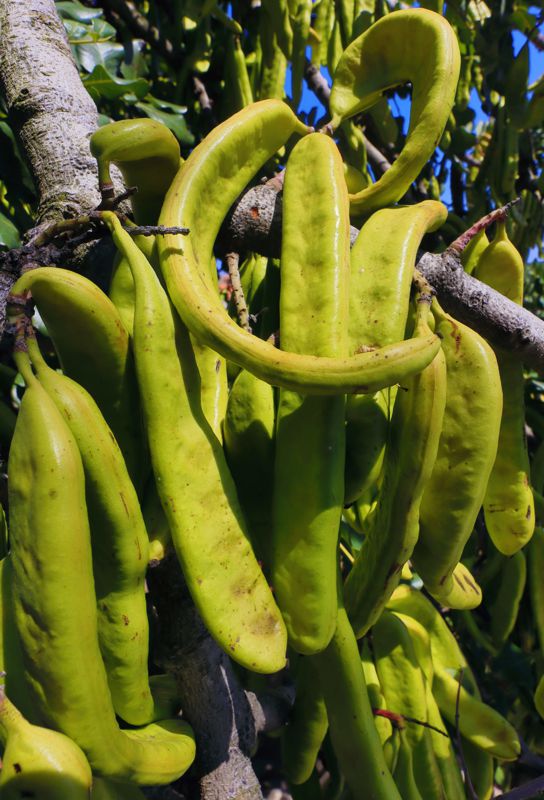
The composition of the vegetation of the Mediterranean maquis, i.e. the group of evergreen sclerophylls, is dominated by the Kermes oak (Quercus coccifera), the Lentisc (Pistacia lentiscus), the Terebinth (Pistacia terebinthus), the heathers (Erica arborea and Erica manipuliflora), the Strawberry tree (Arbutus unedo) and Greek strawberry tree (Arbutus andrachne), followed by Phillyrea latifolia, Rhamnus alaternus and Myrtle (Myrtus communis).
Groups or clumps of Evergreen oak (Quercus ilex), individuals or groups of Carob trees (Ceratonia siliqua) as well as small stands of Cretan maple (Acer sempervirens) can be spotted in the mid-elevation zone.
In some places the above plants form dense clusters of high bushes, while elsewhere they form sparse clusters of low shrubby vegetation mixed with phrygana species.
The pine forest
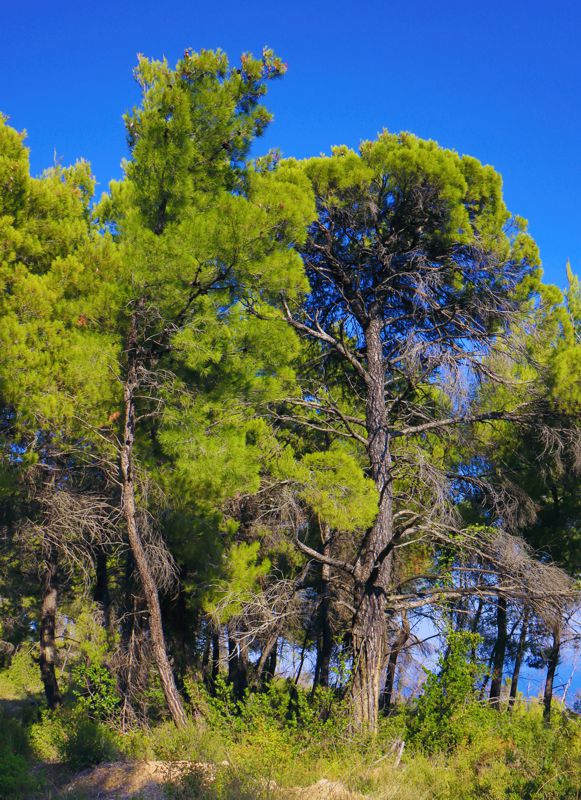
The pine forests on Alonissos and the surrounding islands are formed exclusively by Aleppo Pine (Pinus halepensis). Typicaly, the pine forest structure of the undisturbed stands consists of tall, relatively well-formed individuals. In the shadiest and densest stands, Ivy and Smilax plants climb along the trunks.
In the understorey of the pine forest grow most of the shrubby and semi-shrubby species of the Mediterranean maquis and the phrygana we mentioned above, but also a number of herbaceous plants, such as Trifolium campestre and Trifolium stellatum, Stipa bromoides, Geranium purpureum, Torilis arvensis, Scaligera napiformis, Tuberaria guttata, Blackstonia perfoliata and other widespread species.
Note that near the settlements we can spot isolated individuals of Parasol pines (Pinus pinea), which have been planted and installed as ornamentals. Accordingly, near the villages we will see stands of Cypress trees (Cupressus sempervirens), serving as landmarks or boundary lines.
Vegetation of the ravines
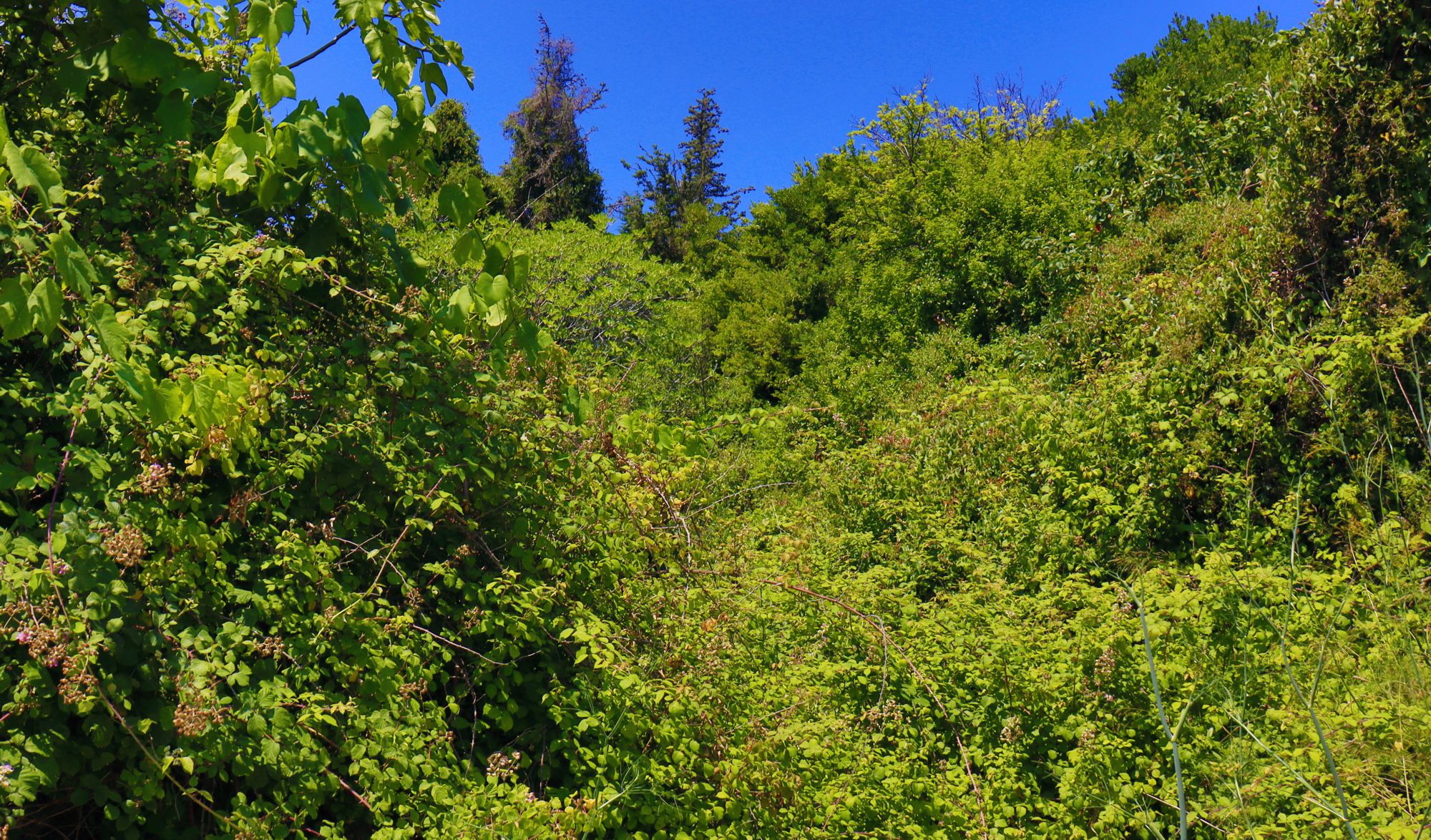
The impenetrable complex of bushes and small trees in the ravines of Chora Alonissos
Click to enlarge
Most of the island's undisturbed ravines are covered with a mixture of spiny shrubs and small trees, entwined around the pines and Plane trees that grow in the bed and on the banks and forming impenetrable stands.
Coastal zone
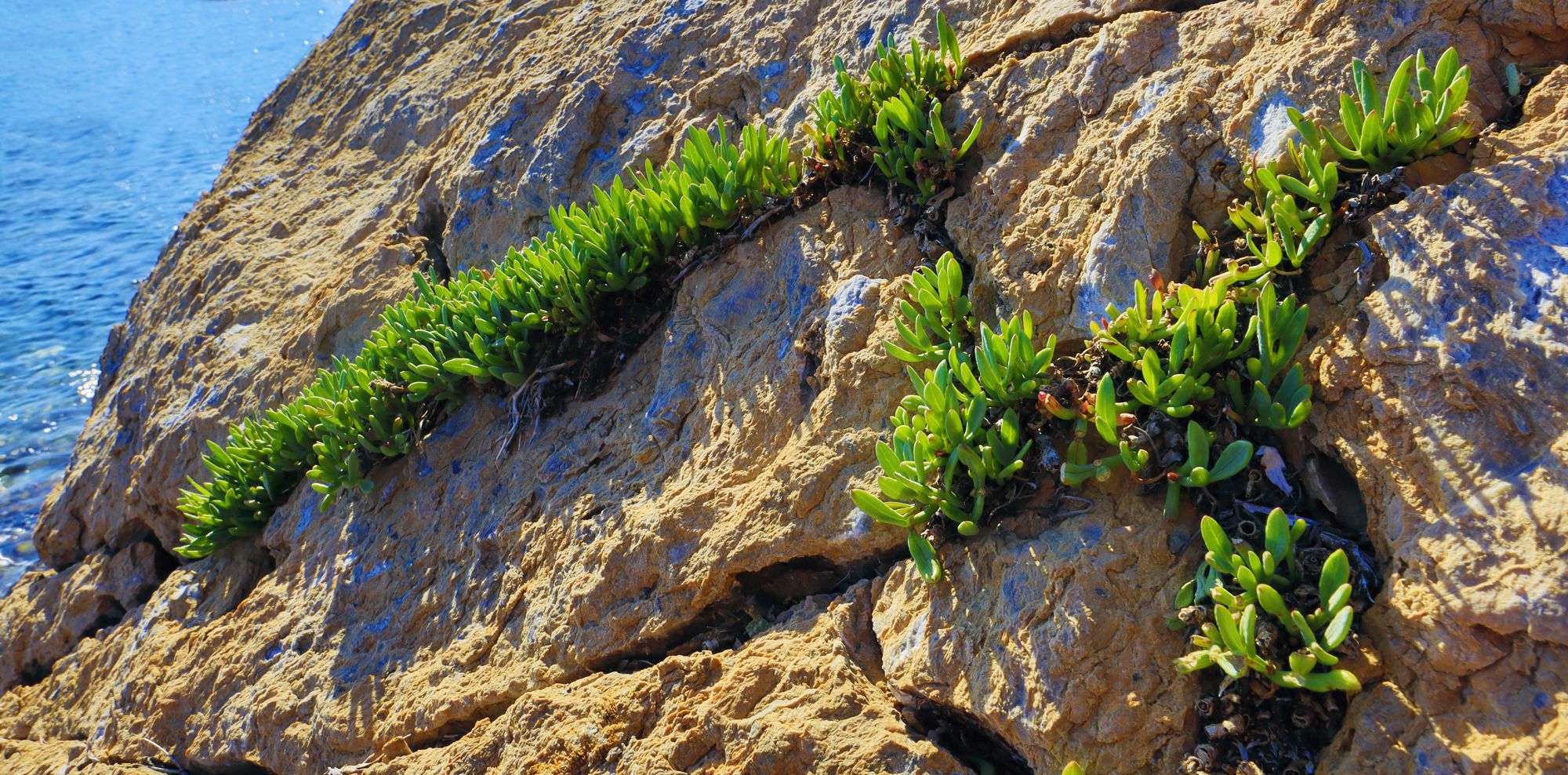
Vegetation of Alonnisos: Rock samphire on the rocky outcrops of Megalos Mourtias
Πατήστε για μεγέθυνση
The coastal zone of Alonissos is rocky - with the exception of the small sandy and gravel beaches. This zone is home to plants that are adapted to the constant spray of sea water and continuous exposure to wind and sun. Typical plants of this adverse environment are the Rock samphire (Crithmum maritimum), members of the genus Limonium, such as Limonium virgatum, the widespread Asterolinon linum-stellatum and the Caper (Capparis orientalis).
The most impressive images of the coastal zone vegetation cover is the deformation caused by the continuous pressure of the winds during the early age of the plants. The phenomenon of the sloping trunks of large shrubs and trees - pines, lentiscs, Kermes oaks and junipers as well as olive trees - is common both on the north and south facing coastline.
Text and photos by T. Adamakopoulos

topoguide Greece
ALONNISOS TOPOGUIDE
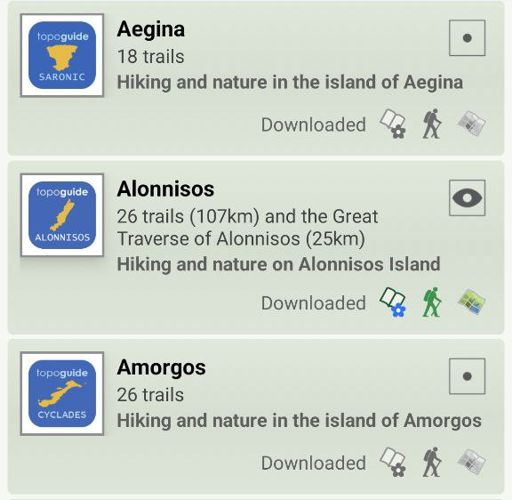
Digital field guide Alonnisos topoguide is available for Android devices as an in-app purchase within the application topoguide Greece. Alonnisos topoguide is a member of the Greek Islands group.
Digital field guide Alonnisos topoguide is also available for iOS (iPhone and iPad) devices as an in-app purchase within the application Topoguide Greece. There also, Alonnisos topoguide is a member of the Greek Islands group.

